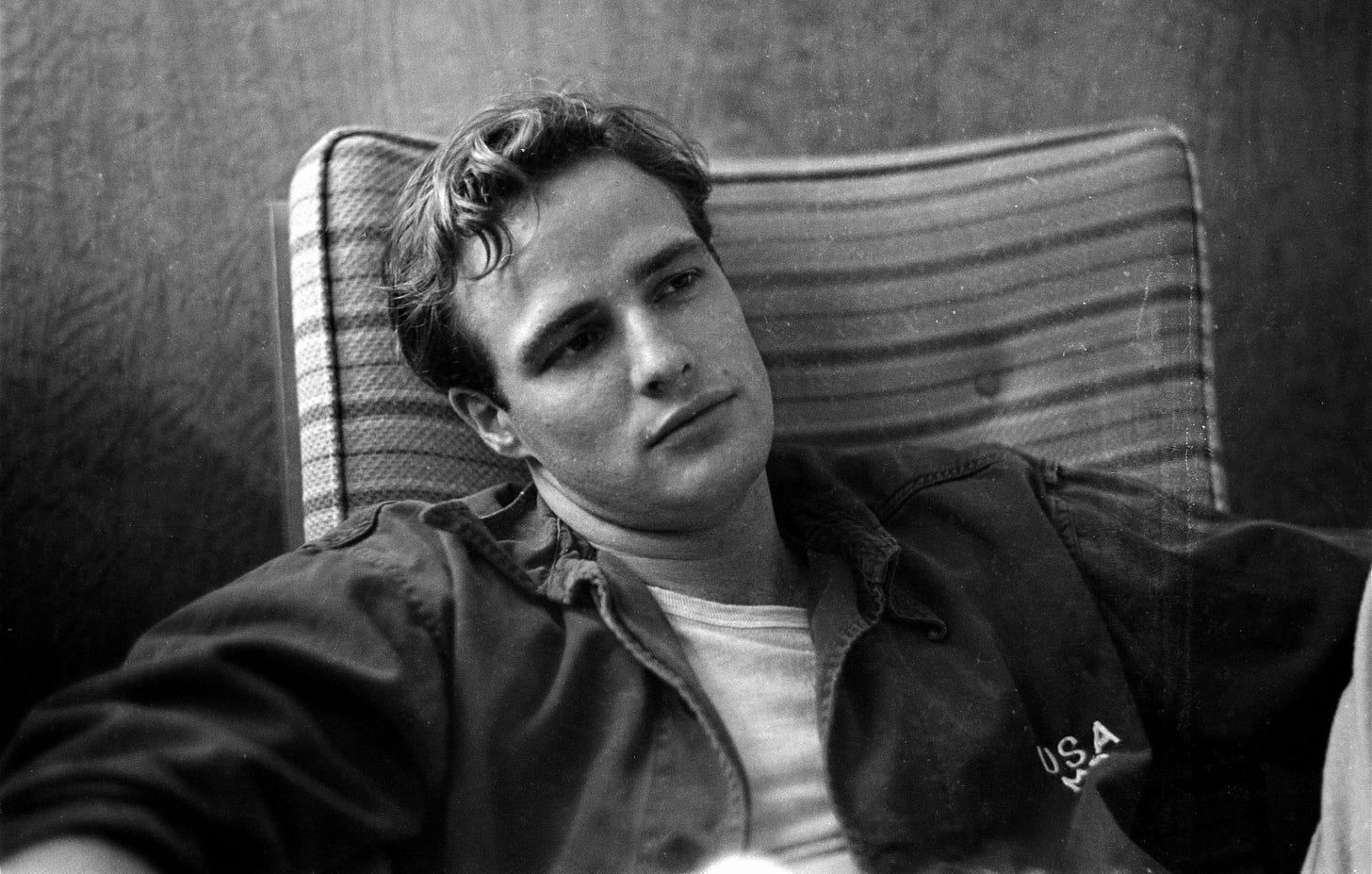I have exciting news to share: You can now read The Similitude in the new Substack app for iPhone.
With the app, you’ll have a dedicated Inbox for my Substack and any others you subscribe to. New posts will never get lost in your email filters, or stuck in spam. Longer posts will never cut-off by your email app. Comments and rich media will all work seamlessly. Overall, it’s a big upgrade to the reading experience.
The Substack app is currently available for iOS. If you don’t have an Apple device, you can join the Android waitlist here.
Taking care of some loose ends and unfinished thoughts today. First, I wanted to pause for a moment to take stock of The Similitude. I’m happy to report that we crossed the threshold of 100 subscribers a couple weeks ago! Many thanks to all you readers who’ve joined this community. I can’t thank you enough. Please consider sharing this newsletter in your social media circles—you can follow me on Twitter @NickCoccoma and plug The Similitude with your friends, family, and colleagues. Word of mouth is the best way to grow the readership—let’s see if we can welcome in the next hundred souls.
Happy St. Patrick’s Day!
Secondly, let me wish all my Irish readers a most happy, joyful St. Patrick’s Day! And remember, everyone’s Irish today. My wife and I’ll be treating ourselves tonight to a viewing of The Quiet Man (1952) on the big screen. My favorite moment of Steven Spielberg’s E.T. (1982) is when Eliot saves the frogs as his alien friend watches the John Ford classic at home:
For a more theological exploration of the meaning of the day, check out this interview from the podcast A.M.D.G. about Celtic spirituality:
And if you haven’t already watched it, I heartily recommend Derry Girls from Netflix—a raucous, heartwarming coming-of-age series set in Northern Ireland at the end of the Troubles.
Baptism, continued
Sticking with theology, another word about baptism. After I posted my reflection on Christian initiation, my boss revealed to me that he wrote his Master’s thesis on the Catholic Church’s theological debate over baptism in the wake of the Second Vatican Council. He later condensed it into an article for the journal Worship, which I’m sharing below for you to download and read. In short, theologians split into four schools of thought about baptism. The first he names the “mature adulthood” tradition. This is essentially my position. It views the church, in the words of Richard Guerrette:
A community of God’s chosen people who, through their faith response to his call in Christ, are making their way as a pilgrim people toward the kingdom.
Baptism, in this context, is about commitment to Christian service. More than just a verbal profession of faith, it depends on evidence of Christian faith in one’s life, “arrived at through a process of conversion.”
The idea of conversion strikes me as key. The stories in the New Testament are about people changing their lives to follow Christ. Narratives of being called—by Jesus himself or by the Apostles in Acts—portray characters radically reorienting their lives to become a disciple. Matthew the tax collector; the fishermen Peter and Andrew; Zacchaeus; Saul on the road to Damascus, etc. The idea of repentance, metanoia, is crucial: Your life’s going in one direction, but you completely turn around and head a different way after an encounter with Christ.
This depiction endorses the decision to reserve baptism until mature adulthood. For in order to change your life, you have actually to have lived—had your own experiences, developed as a person, explored the world and yourself, and more. Or as someone once put it to me, to convert to Christ, you really need to have sinned first—had the experience of going astray and being found again.
But the “environmentalist” school starts from a different theology of the church and Christian faith. The biblical scholar and Anglican bishop N.T. Wright was recently asked about his views on baptism on his podcast, and he endorsed infant initiation. I find his arguments tenuous, but he exemplifies the environmentalist school’s position well:
The Godfather, continued
There have been some enticing perks put out to celebrate the 50th anniversary of The Godfather. The New York Times devoted most of its Arts & Leisure section this past Sunday to the film, which included a revealing interview with Al Pacino about how he landed the part of Michael:
I am deeply honored by it. I really am. It’s a piece of work that I was so fortunate to be in. But it’s taken me a lifetime to accept it and move on.
You can check out some clips of the screen tests of Pacino, James Caan, Diane Keaton (and Martin Sheen!) here:
In addition, The New Yorker Radio Hour provided a wonderful clip last week of Edie Falco reading an excerpt of Pauline Kael’s famous review of the film. You can take in her complete essay here.
Method Acting
Speaking of performances, Terry Gross released a fascinating interview last month with critic Isaac Butler on Fresh Air. Butler’s authored a book on “the Method”, the school of acting developed in Russia by Konstantin Stanislavski and brought to America in the 1930s by the Group Theatre. Butler talks at length about the acting in The Godfather, how each cast member drew on distinct interpretations of the Method for their roles.
What I appreciate most is how Butler pushes back on the notion that the Method is about gaining a ton of weight or indulging in physical or psychological trauma. The heart of its approach is to use the imagination and employ actions to pursue objectives within a character’s given circumstances.
To my surprise, he doesn’t consider Marlon Brando a Method actor. I’ve always thought Brando the embodiment of the Method, but apparently he eschewed the label because it was associated with Lee Strasberg, and Brando studied under Stella Adler, Strasberg’s rival. It might be mere semantics, in the end. My mentor, Steve Vineberg, puts it well in his volume Method Acting: Three Generations of an American Acting Style from 1994:
If it’s true that, as Hal Hinson says, ‘Mystery and ambiguity are the Method actors’ stock in trade,’ then Brando leads the pack.
Butler goes a bit hard in the interview on Brando for refusing to learn his lines and changing his 1947 performance in A Streetcar Named Desire each night. He leaves out the actor’s explanation, which he gave in 1979 to Playboy:
If you watch people’s faces when they’re talking, they don’t know what kind of expressions they’re going to have. You can see people search for words, for ideas, reaching for a concept, a feeling, whatever.
Vineberg follows this with an apt description of Brando from Norman Mailer:
He is the only player alive who knew how to suggest that he was about to say something more valuable than what he did say.
William Hurt, RIP
Finally, on the note of acting, I was saddened to learn that William Hurt died on Sunday. Seeing some moving tributes to him and celebration of his work. A neglected gem, however, is his role in the 2008 movie The Yellow Handkerchief. Directed by the British filmmaker Udayan Prasad from a 1977 Japanese film of the same name, it tells the story of Brett Hanson, a former prisoner in Louisiana who hitches a ride with two troubled teens (Eddie Redmayne & Kristen Stewart) to find his ex-wife (Maria Bello).
This film flew under the radar when it was released, but it's a beautiful road movie and exploration of the Deep South after Hurricane Katrina. Hurt had sad eyes and a soulful face—he combined sensitivity and masculinity in a way similar to Jeff Bridges. He gives a tender performance here in this affecting story of love, regret, and redemption. After much suffering, Hanson earns his peace—may Hurt find the same.








